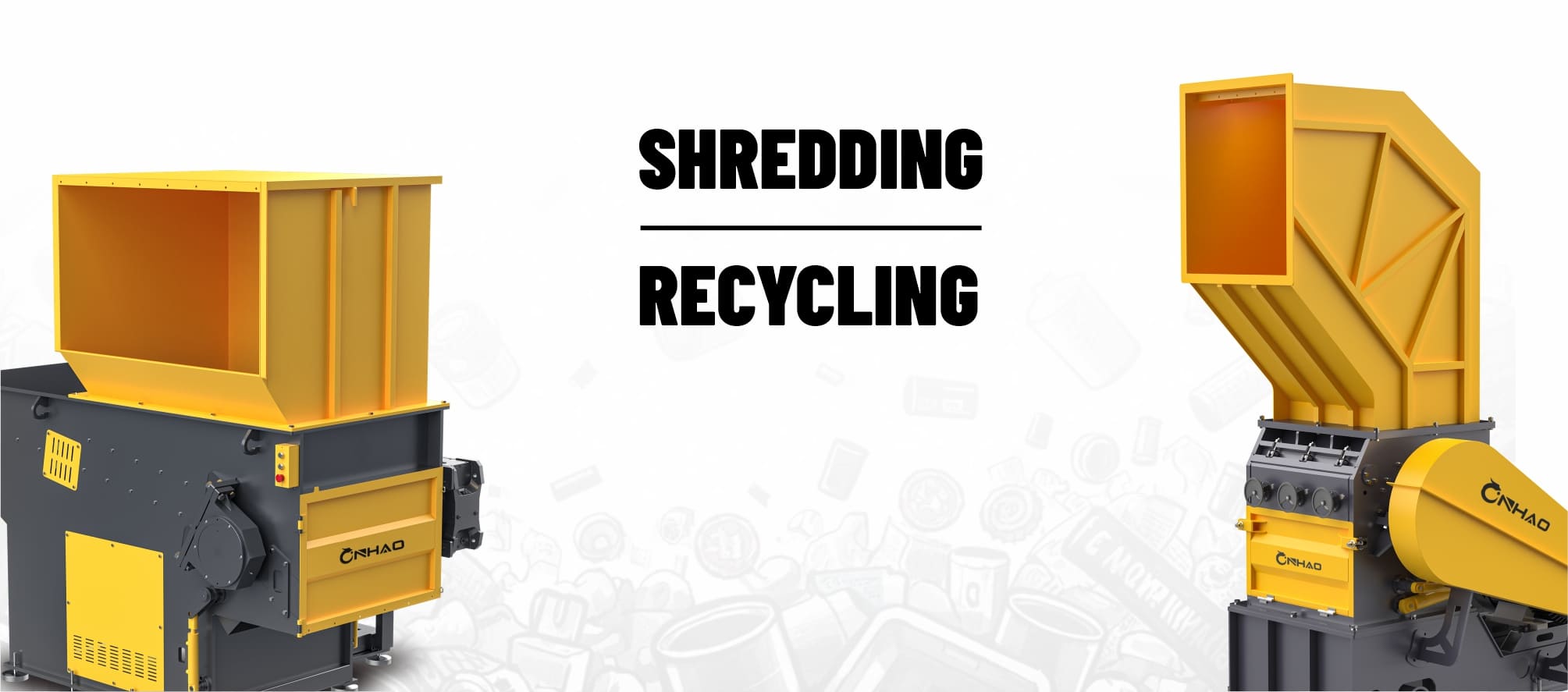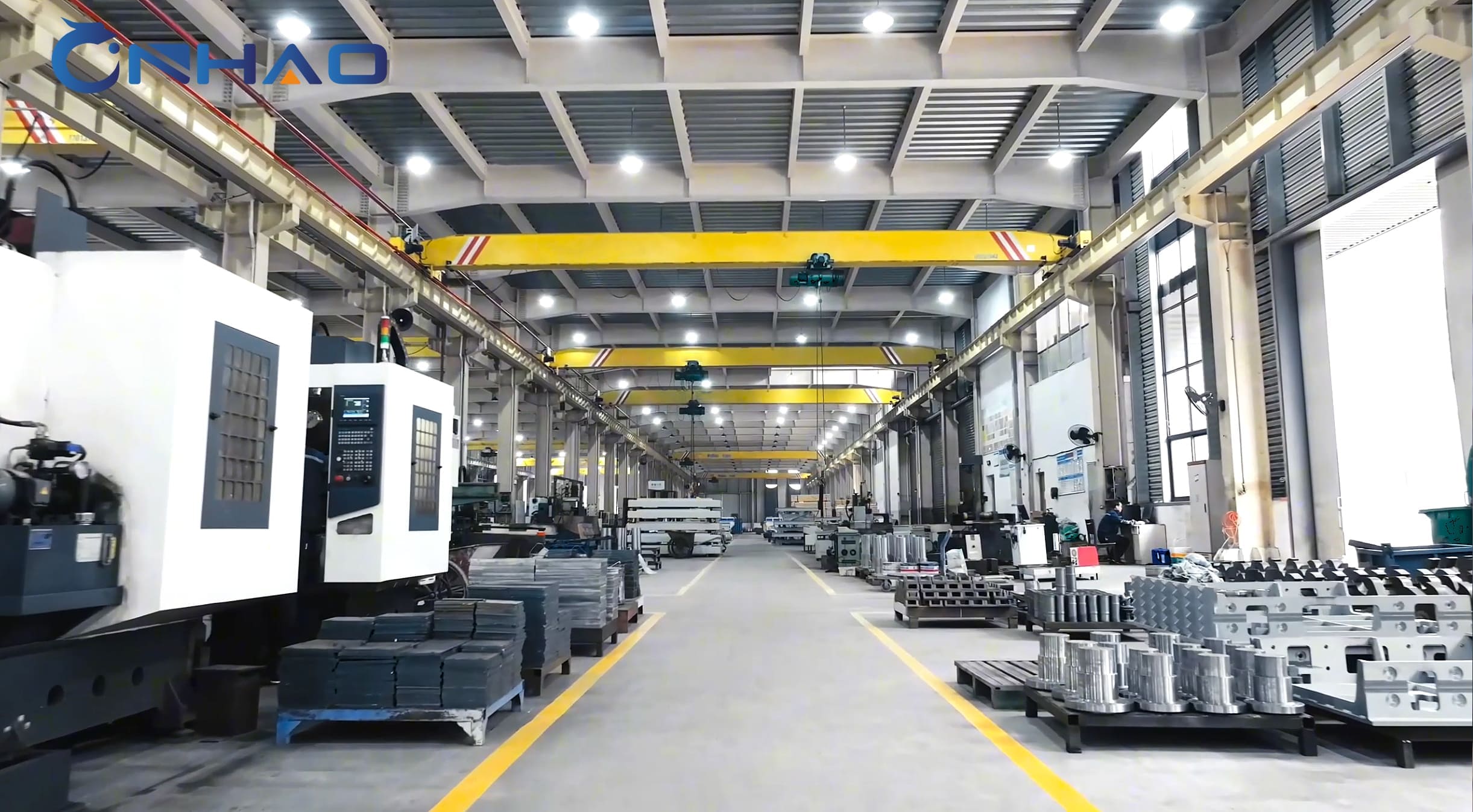In the field of plastic recycling, shredders and crushers are two indispensable pre-processing equipment. While they may appear functionally similar, each has its own specialized focus. Understanding the differences between these two types of equipment under Streamline Eco Tech and making choices based on actual needs are crucial for improving recycling efficiency, reducing operational costs, and building an efficient recycling production line.

Core Differences: Shredder & Crusher
Shredders and crushers differ fundamentally in their working principles, processing materials, and output characteristics.
| Feature Dimension | シュレッダー | クラッシャー |
| Working Principle | Low-speed, high-torque; shear, tear, & pull via intermeshing cutter shafts | High-speed rotation; shear and impact via moving and fixed blades |
| Speed Range | Lower (typically 73 rpm) | Higher (typically 420–580 rpm) |
| Processing Materials | Large-volume, high-strength, difficult-to-process materials (e.g., bundled film, large-diameter pipes, tires) | Pre-crushed or medium-sized waste (e.g., bottles, shells, defective products) |
| Output Size | Larger (typically 20–200 mm), irregular chunks/strips | Smaller (typically <20 mm), relatively uniform granules |
| In-Line Role | Coarse crushing (pre-treatment), volume reduction | Fine crushing (finishing), secondary crushing |
| Core Advantage | Strong capability for processing complex large items; less prone to jamming | Outputs fine, uniform material suitable for direct recycling |
Buyer’s Guide: How to Choose the Right Equipment
Choosing between a shredder, a crusher, or a combination of both depends on your specific needs. Consider the following points:
Identify Material Characteristics
- For large, bundled, or high-tensile materials (e.g., large lumps, solid plates, scrap cars, and appliances), aシュレッダー is preferred for coarse crushing and volume reduction.
- For pre-crushed or smaller waste (e.g., injection sprue, bottle flakes, plastic barrel fragments, appliance shells), aクラッシャー may be more suitable.
- For hard, bulky materials requiring uniform and fine recycled pellets, a “shredder + crusher”combination is recommended.
Determine Capacity and Output Requirements
- Evaluate daily/hourly processing volume to determine equipment model and power.
- Define required output size and shape. For subsequent melting and pelletizing, a crusher providing fine, uniform particles is typically needed.
Evaluate Equipment Quality and Performance
- Structure & Material: Focus on steel thickness, blade material, and heat treatment. Streamline Eco Tech uses high-strength alloy steel blades (standard D2, customizable 42CrMo) for wear resistance and durability.
- Power System: Ensure reliable motors and reducers from reputable brands for stable performance.
- Safety Features: Streamline Eco Tech equipment includes PLC auto-control, overload protection, and auto-reversal to prevent jamming and ensure safety.
Testing Center: Streamline Eco Tech offers a professional testing facility. We strongly recommend bringing your own materials for on-site trials to verify processing efficiency, capacity, and stability.

Synergy: 1+1>2
For modern plastic recycling operations, combining a shredder and a crusher often creates a synergistic “1+1>2” effect, forming an efficient multi-stage size-reduction line: large waste is first coarsely shredded for volume reduction, easing transportation and sorting; Washed fragments are then finely crushed by the crusher. This combination significantly enhances overall processing efficiency and recycled material quality.
A typical “shredder + crusher” process includes:
- Coarse Shredding: Large plastic waste is initially broken down into uniformly sized fragments.
- Sorting & Cleaning: Impurities are separated via air/water classification or magnetic separation.
- Fine Crushing: Cleaned fragments are precisely crushed into uniform granules for recycling.
Advantages of this multi-stage approach:
Specialized Efficiency: Each machine operates optimally, maximizing productivity.
- Reduced Energy Consumption: Avoids over-processing by single machines.
- Improved Product Quality: Intermediate sorting ensures effective impurity removal.
- System Flexibility: Process parameters can be adjusted based on material changes.
Although the initial investment for a “shredder + crusher” line is higher, its economic benefits are substantial. Practices show that for recycling operations handling over 3,000 tons annually, the payback period typically ranges from 2.5 to 3 years, offering greater long-term ROI compared to single-machine solutions.
Configuration recommendations for different scales:
- Small-scale (2–3 tons/shift): Single-shaft shredder + Small crusher.
- Mid-to-high-end (3–7 tons/shift): Double シャフトシュレッダー + large crusher + automated sorting.
- Large-scale (1+ton/hour): Heavy-duty shredder + multiple crushers + full automation.
Choosing between Streamline Eco Tech’s shredder and crusher depends on specific needs:
- The shredder excels as a pre-treatment expert for “tough” bulk materials.
- The crusher is a precision tool for producing high-quality recycled granules.
- Combining both is the optimal solution for processing complex waste efficiently, with high output quality and maximum economic return.
Frequently Asked Questions (Q&A)
Is price the only consideration?
Absolutely not. An unusually low price may indicate compromises in materials, workmanship, or configuration. Factors such as equipment stability, production efficiency, maintenance costs, and service life are equally important. A comprehensive evaluation of overall cost-effectiveness is essential.
A cheaper machine that frequently breaks down, underperforms, or suffers rapid wear may incur significantly higher long-term costs than a higher-quality, slightly more expensive option.

Is on-site inspection and testing necessary before purchase?
Highly recommended. Visiting the factory allows you to objectively assess the manufacturer’s scale, technical capability, and craftsmanship.
Bringing your own materials to Streamline Eco Tech’s facility for testing is the most effective way to verify whether the equipment truly meets your needs, enabling you to observe processing results, capacity, and operational performance firsthand.

How important is after-sales service, and what should be considered?
Extremely important. Reliable after-sales service is critical for long-term stable operation.
Streamline Eco Tech offers installation guidance, operational training, timely maintenance support, and stable spare parts supply. Choosing a reputable and financially stable manufacturer can prevent many potential issues down the line.